
Population Health Metrics
Scope & Guideline
Championing Research for Global Health Impact
Introduction
Aims and Scopes
- Population Health Measurement:
The journal emphasizes the development and application of metrics to assess population health, including life expectancy, disability-adjusted life years (DALY), and other health indicators. - Mortality and Morbidity Analysis:
Research often focuses on understanding causes of mortality and morbidity, examining trends across different demographics and geographic regions. - Health Disparities and Inequities:
A consistent focus on identifying and analyzing health disparities related to socioeconomic, geographical, and ethnic factors, aiming to inform policy and interventions. - Innovative Statistical Methods:
The journal publishes studies that utilize advanced statistical techniques, including Bayesian modeling, small area estimation, and machine learning, to analyze population health data. - Data Quality and Health Information Systems:
Research includes evaluations of health information systems and the quality of health data, aiming to improve data collection methods and reporting practices. - Global Health Perspectives:
The journal covers a broad range of geographic contexts, emphasizing studies from low- and middle-income countries to address global health challenges.
Trending and Emerging
- Impact of COVID-19 on Population Health:
There is a significant increase in studies examining the effects of the COVID-19 pandemic on various health metrics, including mortality rates, health disparities, and healthcare systems. - Health Data Analytics and Machine Learning:
Emerging research is leveraging machine learning and advanced analytics to improve the accuracy of health predictions and assessments, indicating a trend towards integrating technology with public health research. - Mental Health Metrics:
Research on mental health is gaining prominence, with studies focusing on population mental wellbeing and the impact of socioeconomic factors on mental health outcomes. - Longitudinal and Cross-Country Comparisons:
There is a growing trend towards longitudinal studies and cross-country comparisons that assess health metrics over time and across different healthcare systems. - Health Equity and Social Determinants:
An increasing emphasis on the social determinants of health and health equity reflects a commitment to understanding and addressing health disparities in diverse populations.
Declining or Waning
- Traditional Epidemiological Studies:
There seems to be a decline in traditional epidemiological studies that rely solely on basic statistical analysis without incorporating new methodologies or metrics. - Single-Disease Focus:
Research that concentrates on single diseases is becoming less prominent. There is a noticeable shift towards studies that consider comorbidities and broader health outcomes. - Static Health Metrics:
The use of static health metrics without consideration of dynamic changes over time or across populations appears to be decreasing, as the journal increasingly favors innovative and adaptable measurement approaches. - Localized Health Issues without Broader Context:
Studies focusing exclusively on localized health issues without linking them to broader population health trends or frameworks are becoming less common.
Similar Journals
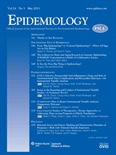
EPIDEMIOLOGY
Empowering research to enhance population health outcomes.EPIDEMIOLOGY, published by Lippincott Williams & Wilkins, stands as a vital resource in the field of epidemiological research. With its ISSN 1044-3983 and E-ISSN 1531-5487, this journal has been a cornerstone for scholars since its inception in 1990. Covering a wide array of topics within the domain, it strives to disseminate cutting-edge findings that inform public health policies and clinical practices. Currently ranked Q3 in Epidemiology and positioned at #33 out of 148 according to Scopus, the journal boasts an impressive 78th percentile rank, reflecting its significance and impact within the academic community. Though not open access, EPIDEMIOLOGY provides robust access options for institutional subscribers, ensuring that critical epidemiological insights reach a broad audience. As this field continues to evolve, the journal remains dedicated to empowering researchers, practitioners, and students with the knowledge necessary to advance public health initiatives and improve population health outcomes.
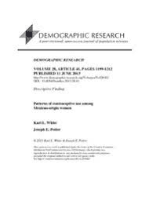
Demographic Research
Empowering informed decisions with demographic insights.Demographic Research is a leading journal in the field of demography, published by the prestigious Max Planck Institute for Demographic Research. Available in both print and electronic formats (ISSN: 1435-9871, E-ISSN: 1435-9871), this open-access journal has been a valuable resource for demographers and social scientists since its inception in 1999. With a commendable impact factor and ranked Q1 in its category, the journal demonstrates a significant commitment to advancing our understanding of demographic trends and their implications across contexts. Hailing from Germany, the journal's rich international perspective adds depth to its studies, making it a vital platform for innovative research. Researchers, professionals, and students are encouraged to engage with its wealth of articles that not only document demographic changes but also offer insights critical for policy-making and social planning. The journal's broad scope encompasses diverse themes, providing a comprehensive overview of the demographic shifts that shape societies today.

EPIDEMIOLOGIC REVIEWS
Illuminating Health Trends Through Rigorous ResearchEPIDEMIOLOGIC REVIEWS, an esteemed publication from Oxford University Press Inc, stands as a beacon in the fields of Epidemiology and Medicine, with a significant focus on synthesizing and analyzing the latest research and developments in these areas since its inception in 1979. This journal, with its ISSN 0193-936X and E-ISSN 1478-6729, is recognized for its high academic rigor, boasting a 2023 Q1 quartile ranking in both Epidemiology and Miscellaneous Medicine, and ranks #25 out of 148 in Scopus's Epidemiology category, placing it in the prestigious 83rd percentile. Although it does not currently offer open access, its subscription options provide comprehensive access to a wealth of epidemiological knowledge, essential for researchers, public health professionals, and students keen on advancing their understanding of health trends and disease patterns. With a commitment to promoting high-quality research and impactful insights, EPIDEMIOLOGIC REVIEWS plays a crucial role in enhancing public health discourse and shaping future epidemiological inquiries.
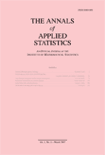
Annals of Applied Statistics
Unveiling Innovations in Statistical ResearchThe Annals of Applied Statistics, published by the Institute of Mathematical Statistics (IMS), is a leading academic journal that serves as a crucial repository for groundbreaking research in the fields of statistics and probability applications. Since its inception in 2008 and continuing through 2024, this journal has established itself as an influential platform with a notable reputation, boasting a prestigious Q1 classification in 2023 across critical categories such as Modeling and Simulation and Statistics, Probability, and Uncertainty. With its rigorous peer-review process and significant Scopus rankings—including a position of #78 in Statistics and Probability—Annals of Applied Statistics aims to foster innovative statistical methods and their applications in a variety of disciplines. Researchers, professionals, and students interested in the latest advancements in analytical methods will find this journal essential for navigating the evolving landscape of applied statistics. The journal does not offer open access options, ensuring that published content reflects the highest academic standards.

MMWR Surveillance Summaries
Transforming Data into Actionable Health StrategiesMMWR Surveillance Summaries, published by the Centers for Disease Control and Prevention, is a premier journal within the fields of Epidemiology, Health Information Management, and related health sciences. With an impressive recognition as a Q1 journal in multiple categories, it ranks among the top resources for scholars and practitioners, boasting significant impact factors reflecting its authority and relevance. This journal serves as a vital conduit for disseminating critical public health surveillance data, shaping health policies and practice. Its comprehensive coverage from 2002 to 2024 ensures that researchers and professionals remain informed of vital trends and findings in the ever-evolving landscape of public health. Although not an open-access journal, MMWR Surveillance Summaries remains an essential repository of information, guiding critical research and decision-making in health-related fields.

Lancet Regional Health-Western Pacific
Empowering Health Policies in a Diverse RegionLancet Regional Health-Western Pacific is a premier academic journal published by Elsevier, focusing on the diverse and dynamic field of health in the Western Pacific region. With an impressive Q1 ranking across several vital categories such as Geriatrics and Gerontology, Health Policy, Infectious Diseases, and Public Health, this journal is positioned at the forefront of health research and policy development. The journal aims to provide a platform for innovative research, reviews, and opinion pieces that lead to improved health outcomes and influence health policy across this geographically and culturally rich area. Offering open access to its content, Lancet Regional Health-Western Pacific ensures that the latest findings are readily available to researchers, professionals, and policymakers alike, ultimately contributing to the global discourse on health issues. As it continually strives to maintain rigorous publication standards, the journal serves as a crucial resource in promoting evidence-based practices and driving advancements in public health.

Health Services and Outcomes Research Methodology
Uncovering the methodologies that matter in health services.Health Services and Outcomes Research Methodology is a premier journal published by Springer, dedicated to advancing the field of health services research through rigorous methodology. Established in the Netherlands, this journal operates without an Open Access model, ensuring a quality-controlled environment for distributing important findings in the health policy and public health domains. With a commendable impact factor that places it in the second quartile (Q2) for both Health Policy and Public Health, Environmental and Occupational Health categories, it ranks favorably in Scopus, showcasing its relevance and influence within these critical fields. Researchers, healthcare professionals, and graduate students will find this journal a vital resource for exploring innovative research methodologies and outcomes that critically inform health systems and policies. The journal spans contributions from the convergence years of 2000 to 2004, and continues to publish impactful studies every year to 2024, elevating the discourse surrounding health services research.
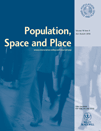
Population Space and Place
Unraveling the Complexities of Population TrendsPopulation Space and Place is an esteemed academic journal published by WILEY, dedicated to advancing the fields of demography and geography, planning, and development. With an impressive 2023 impact factor and categorized in the top quartile (Q1) for both demography and geography, this journal serves as a vital platform for researchers, professionals, and students seeking to explore the spatial dimensions of population dynamics. Founded in 2004 and running through 2024, it has established itself as a significant contributor to scholarly discussions, evidenced by its high Scopus rankings, including rank #18 out of 139 in demography and #165 out of 821 in geography and planning. While the journal currently does not offer open access, it remains a key resource for those involved in academic research and policy formulation. With its focus on the interplay between population trends and spatial analytics, Population Space and Place is essential for anyone aiming to understand the complexities of population geography in a rapidly changing world.
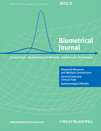
BIOMETRICAL JOURNAL
Transforming medical data into actionable knowledge.BIOMETRICAL JOURNAL is a prestigious academic publication dedicated to advancing the fields of Medicine and Statistics. Published by WILEY since its inception in 1977, this journal plays a critical role in disseminating cutting-edge research and methodologies that bridge the gap between statistical theory and real-world medical applications. With an impressive Q1 ranking in both Medicine (miscellaneous) and Statistics, Probability and Uncertainty, it is recognized for its high-impact contributions to the scientific community. The journal actively encourages submissions that utilize innovative statistical techniques to address complex biomedical issues, making it an essential resource for researchers, professionals, and students aiming to enhance their understanding of quantitative approaches in health and medicine. Although the journal is not open access, its rigorous peer-review process guarantees the quality and relevance of published works, further establishing its significance in the academic landscape.

JOURNAL OF POPULATION RESEARCH
Exploring the dynamics of human populations.JOURNAL OF POPULATION RESEARCH, published by Springer, is a premier journal dedicated to advancing the field of demographic studies. With a focus on research that addresses the complexities of population dynamics, this journal serves as a vital platform for scholars, practitioners, and students alike. It holds a commendable Q2 ranking in the Demography category for 2023, underscoring its influence and commitment to quality research. The journal spans a rich convergence of knowledge from 2005 to 2024, covering key developments and emerging trends in population research. Although it operates under a traditional access model, its impact continues to resonate throughout the academic community, highlighting the importance of robust demographic analysis in policy and planning. By fostering insightful discussions and providing access to groundbreaking studies, the JOURNAL OF POPULATION RESEARCH remains an essential resource for those eager to deepen their understanding of population issues.